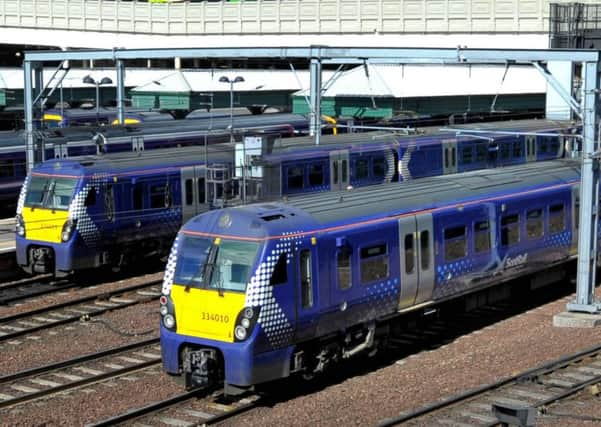Alastair Dalton: Need to know if trains really arrive on time


We haven’t heard much discussion about ScotRail’s punctuality for some time, probably because it has steadily improved and is now at its best for two years.
But 12 months ago, it was at the centre of a political storm, largely driven by Labour’s nationalisation agenda, when performance dipped slightly below minimum standards.
Advertisement
Hide AdAdvertisement
Hide AdThe delays coincided with disruption caused by major improvement work, but also the leaf fall season - which is again upon us.
That could return the focus to timekeeping, especially when some tabloid headline writers still profess incredulity as to how leaves could delay trains.
It might be easy to kick your way through them, but on the rails they become crushed into a slippery layer, causing trains to skid and overshoot signals and platforms.
Traditionally, trains are classed as being on time if they arrive at their destination within five minutes of the timetable, having called at all the scheduled stations. This industry standard is known in railway parlance as the public performance measure, or PPM.
However, there are moves, led by the official passenger watchdog Transport Focus, for punctuality to be recorded as trains arriving within one minute, which is known as “right time” or “on time”.
It argues that such a yardstick is a much better reflection of what commuters expect, especially on shorter trips, when a five-minute delay can be a significant addition to the journey.
Such lateness could have implications for catching the next train, or might make passengers late for appointments.
ScotRail’s latest figures, for the four weeks to mid-September, show significant differences between the two performance measures on some lines.
Advertisement
Hide AdAdvertisement
Hide AdAt Glasgow Central, its busiest station, where nearly 500 of its services arrive a day, a seemingly impressive 94.1 per cent are on time according to PPM. However, only just over half actually arrive “on time” - 52.6 per cent.
There’s a similar picture at Edinburgh Waverley, with 86.9 per cent PPM, but a similar right-time performance as Central - 51.2 per cent.
At the extremes, the proportion of trains arriving bang on time at the end of some lines is a fraction of the official punctuality figure.
At Ardrossan Harbour, those catching the Arran ferry should know that only third are on time when the PPM figure is 92.7 per cent.
There are similar discrepancies for trains terminating at Cumbernauld and Milngavie.
Some within the rail industry warn that a move to “right time” would be counter-productive, since running all trains at that level of punctuality is nigh on impossible because of the wide range of potential delays that affect them.
They also said it’s likely to mean less flexibility to wait for passengers dashing to catch a train, and doors could be closed earlier.
Such sceptics said it could also lead to timetables being unnecessarily extended so that trains would run to time.
Advertisement
Hide AdAdvertisement
Hide AdHowever, that is to miss the point. Passengers must be told how punctual their trains really are - and ScotRail already publishes monthly figures for terminating stations.
Train operators should then be penalised - or rewarded - based on the strictness of that measure compared to PPM. It’s in everyone’s best interests that we know exactly how well our railways are doing.